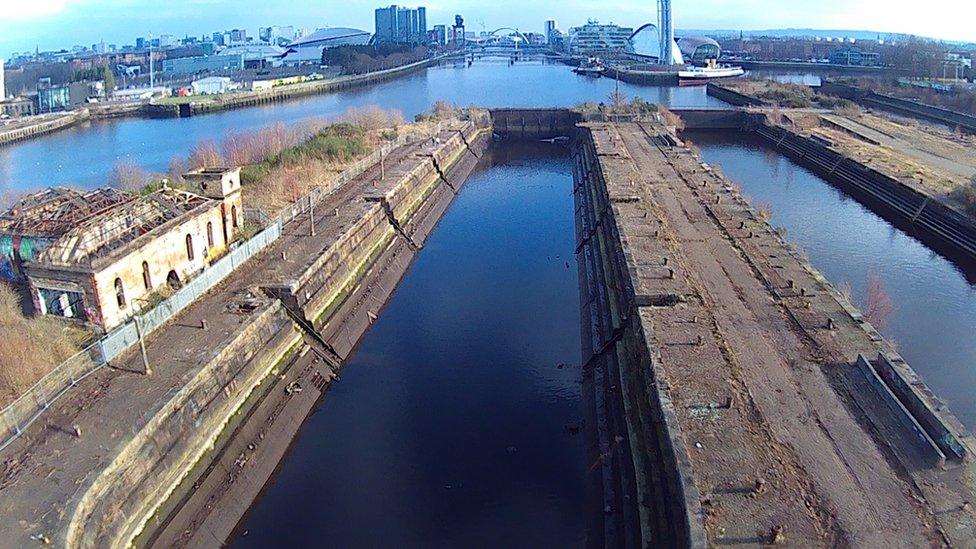Govan dry dock restoration wins national award
- Published

Efforts to restore a historic dry dock in the heart of Glasgow have won a national maritime award.
The three Govan Graving Docks have lain derelict for decades but plans are under way to bring them back into use.
Dock number one is due to be restored as a repair facility for historic ships as part of the development.
Restoration work of the 1930s steamer TS Queen Mary is already taking place next to the site.
The three docks were built by the Clyde Navigation Trust in the late 19th Century and used extensively for ship repairs and overhauls.
But since they closed in 1987, they have fallen into a state of disrepair.

The derelict docks were used for filming scenes for Sam Mendes' World War One film 1917
The crumbling facility was used for some filming for the Sam Mendes World War One film 1917.
The latest redevelopment plans which include a mix of housing, green spaces and ship repair facilities were boosted earlier this year by a £2.4m grant from the Scottish government.
Now the project has picked up a coastal communities excellence award , externalfrom National Maritime.

A vision drawing of the proposed developments by Glasgow-based architects O'DonnellBrown
Peter Breslin, managing director of Govan Drydock Ltd, said: "We have exciting plans for the further development of the drydock, which will help contribute to the ongoing regeneration of the Clyde Waterfront and breathe life into the Govan area of Glasgow."
Previous attempts to redevelop the A-listed site have been rejected by planners at Glasgow City Council.
The latest proposal includes a footbridge that would link the site to the nearby Glasgow Science Centre.
Some jobs have already been created with the award of a year-long contract to begin the restoration of TS Queen Mary, which was launched on the river 90 years ago.
The project, which has the Princess Royal as its patron and was supported by the late Harry Potter actor Robbie Coltrane, aims to have the ship carrying passengers once again.
TS Queen Mary is currently moored beside the dry docks but could be moved into dock number one next year for the next stage of the work.